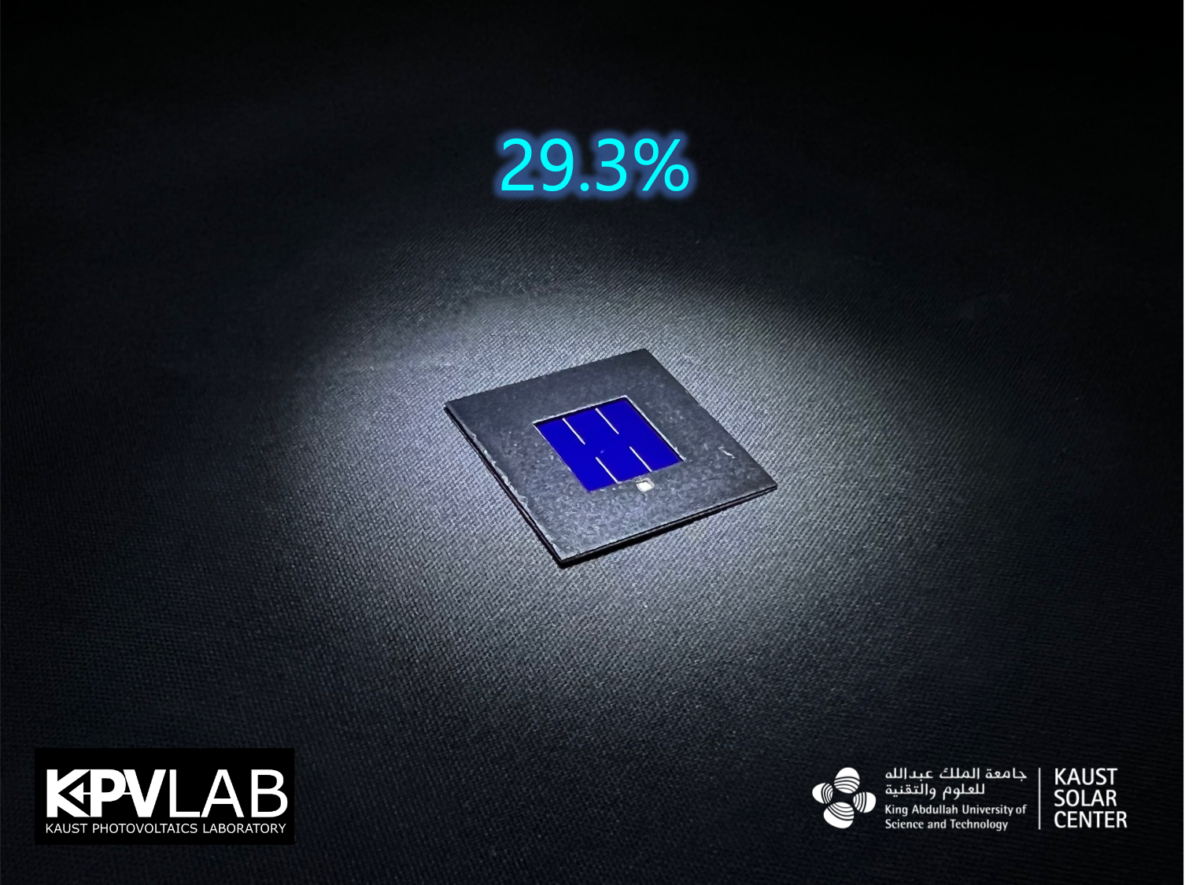Researchers at King Abdullah University of Science and Technology (KAUST) have developed an inverted perovskite-silicon tandem solar cell with a 1 nm thick interlayer based on magnesium fluoride (MgFx) placed between the perovskite layer and the electron transport layer (ETL), in order to reduce voltage losses.
“The long-term research goal of the KAUST's KPV-LAB is to develop a realistic high-efficiency photovoltaic solution for sunny and hot climates and our device is in line with this goal,” researcher Erkan Aydin told pv magazine.
The cell has a p-i-n structure and relies on an interlayer that provided high transparency, high stability, and good thickness control.
“We demonstrated that the charge transport and recombination interfaces could be carefully tuned with MgFx interlayers, enabling a certified efficiency of 29.3%,” the scientists said.
Currently, the most powerful perovskite/silicon tandem solar cell is a 29.8% device that was recently developed by scientists at Helmholtz-Zentrum Berlin (HZB) in Germany.
The Saudi scientists fabricated the cell with a sub-cell based on crystalline silicon wafers with double-side texture, which they say reduces front reflection while improving light trapping. They also placed the MgFx interlayer at the electron-selective top contact.
They used buckminsterfullerene, a molecule which is also known as C60, for the fabrication of the HTL, and added a tin(IV) oxide (SnO2) layer and an indium tin oxide (IZO) top contact. The Sno2 layer acts as a buffer against damage from the sputtering of the IZO top contact. This IZO-perovskite structure, according to the researchers, supported a very slow carrier decay process and improved charge extraction.
The scientists tested an encapsulated solar cell built with this architecture at the CalLab of the Fraunhofer Institute for Solar Energy Systems (Fraunhofer ISE) in Germany. The device achieved a steady-state power conversion efficiency of 29.3% and a reverse-scan efficiency of 29.4%. It also achieved an open-circuit voltage of 1.85 V, a short-circuit current of 19.8 mA/cm2, and a fill factor of 77.9%.
Popular content
“The device statistics corroborated that the power conversion efficiency improvement was mainly the result of enhanced open-circuit voltage and fill factor,” they explained.
The cell went through damp-heat testing and was able to retain 95.4% of its initial efficiency after 1,000 hours.
“The open-circuit voltage even improved slightly, indicating that the perovskite itself and the interfacial layers were sufficiently tolerant to thermal stress,” the research team said.
The academics presented the cell in “Efficient and stable perovskite-silicon tandem solar cells through contact displacement by MgFx,” which was recently published in Science.
“Looking forward, our overall goal is to enhance the efficiency and stability as much as possible and drive down the [levelized cost of electricity] below the current mainstream crystalline silicon solar cells,” Aydin said.
In December 2021, the same research group achieved a power conversion efficiency of 28.2% for a tandem solar cell with an area of around 1 square centimeters, based on an n-i-p perovskite stacked on top of a silicon heterojunction. The performance was achieved through a novel strategy to suppress halide segregation and reduce nonradiative recombination loss. The method involves the use of carbazole, a nitrogen-containing heterocyclic molecule, as an additive for the cell perovskite precursor.
This content is protected by copyright and may not be reused. If you want to cooperate with us and would like to reuse some of our content, please contact: editors@pv-magazine.com.



4 comments
By submitting this form you agree to pv magazine using your data for the purposes of publishing your comment.
Your personal data will only be disclosed or otherwise transmitted to third parties for the purposes of spam filtering or if this is necessary for technical maintenance of the website. Any other transfer to third parties will not take place unless this is justified on the basis of applicable data protection regulations or if pv magazine is legally obliged to do so.
You may revoke this consent at any time with effect for the future, in which case your personal data will be deleted immediately. Otherwise, your data will be deleted if pv magazine has processed your request or the purpose of data storage is fulfilled.
Further information on data privacy can be found in our Data Protection Policy.